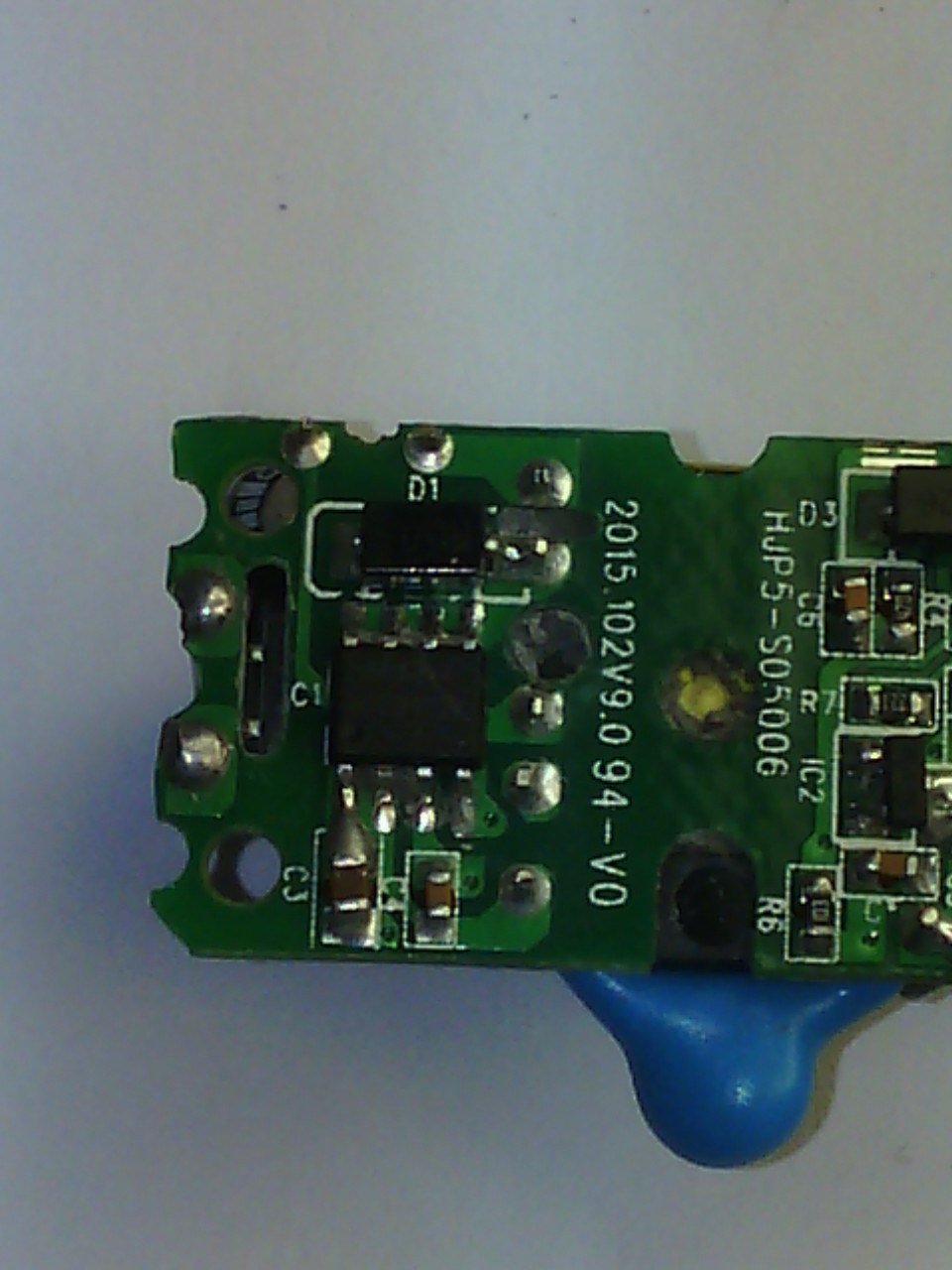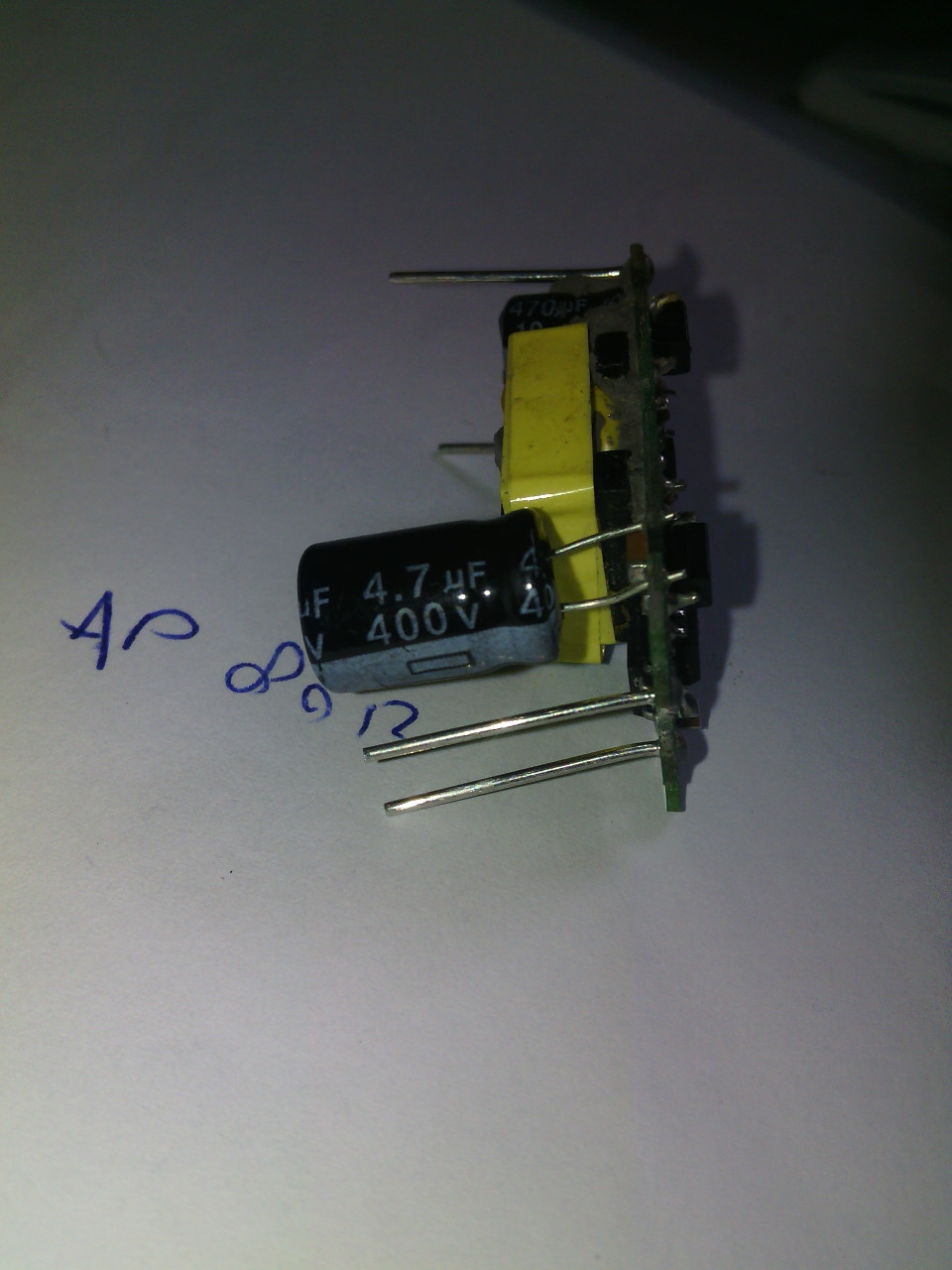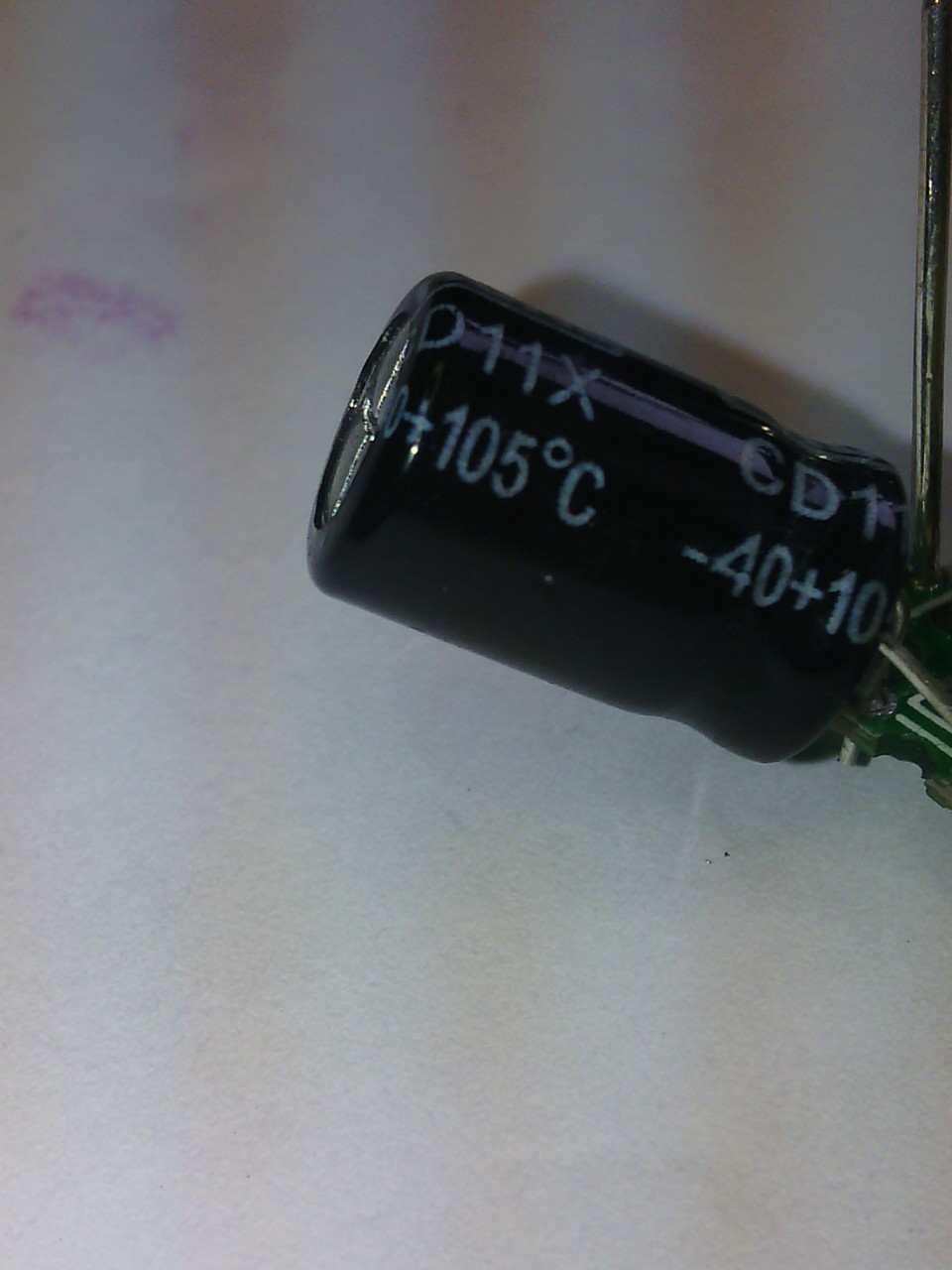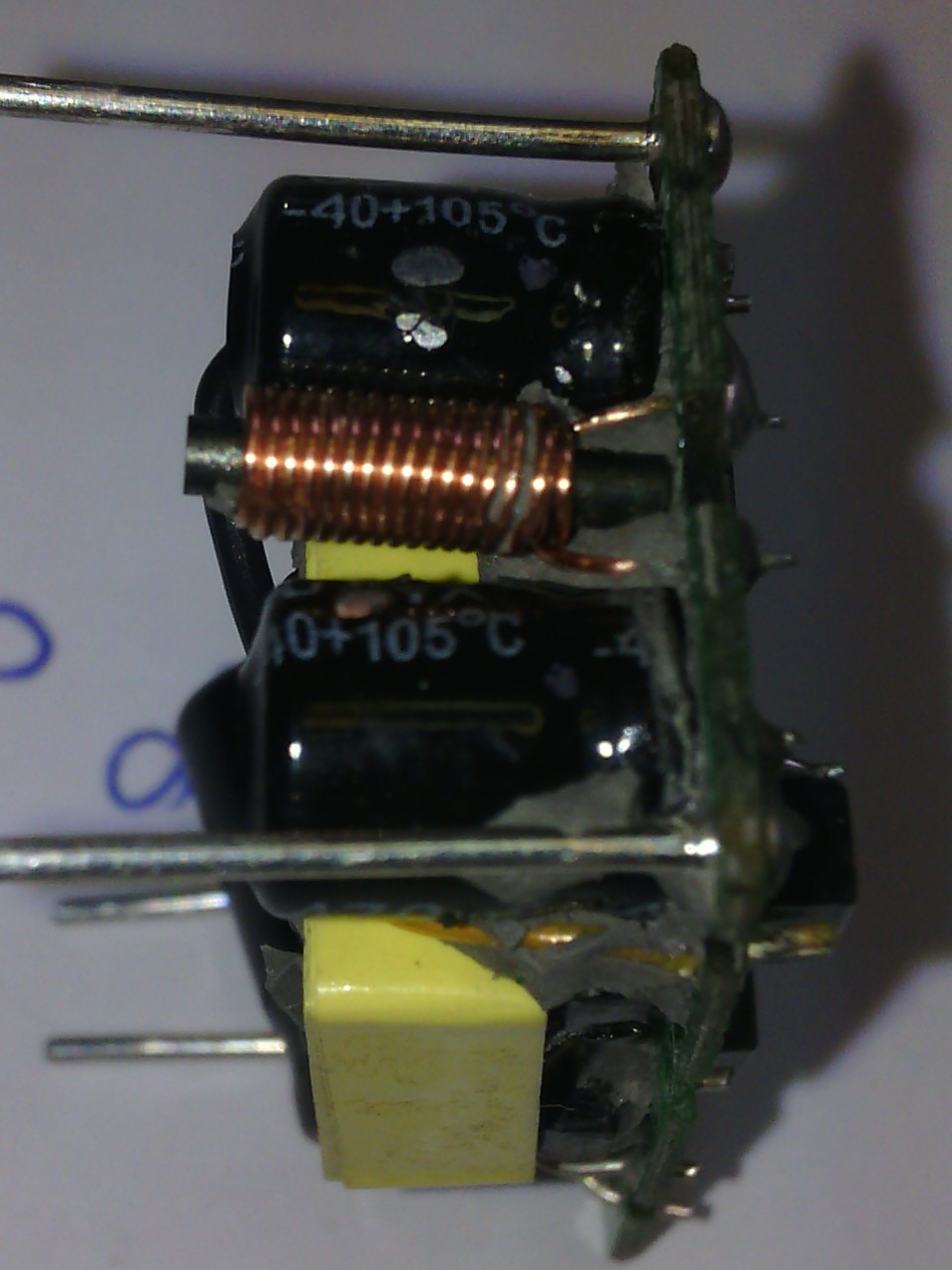Safe In-Wall AC to DC Transformers??
-
And I found the AP8012 chip inside. It has the following features:
_1286955514_oj99d4.pdf@Bertb it is hard to see from the photos, are the capacitors rated for 105c?
-
Observe the air gaps.
I also tried to incinerate the gum stuff that is inside the module with a cigaret lighter.
After a couple of seconds it starts to glow, then, after some 10 seconds, the material starts to burn. But this stops within some 20 seconds ofter removal of the lighter.
I made a film, but it is too large to upload.I am not an expert on AC-DC converters, but I am quite impressed by the layout of the design.
The only thing that worries me is that I do not see how the OVP is created. On the other hand, this can be easily solved by adding a fuse and a ovp zener in the primary circuit.
-
@Bertb yes,although to be expected. Did you see the comparison mentioned a bit earlier in this thread? That is the first thing he checked
-
In the datasheet we can see it is implemented in the chip (in the block diagram) and how it works is explained at page 7. If VCC not well built, the chip would not work well I think.
-
I do not totally agree with this. When I take a look at the example circuit and read the ovp text, I can only conclude that the output is protected, because the circuit seizes to work when VCC rises to high. Whatever happens to the input circuit, I don't know. Therefore I prefer a fuse and and a varistor.
Have a look at the tutorial link text
-
I do not totally agree with this. When I take a look at the example circuit and read the ovp text, I can only conclude that the output is protected, because the circuit seizes to work when VCC rises to high. Whatever happens to the input circuit, I don't know. Therefore I prefer a fuse and and a varistor.
Have a look at the tutorial link text
@Bertb thank you for your testing!!! Although I don't know much about hardware I am gathering by the posts here that it is mostly good news!
So, now for the big question... If I were to add an external fuse like pictured here does everyone agree this is safe to put in a wall?
And, a follow up question if the answer is yes. Are there any basic tests we can do at home to verify the performance should be the same as what was tested here?
-
@Bertb, thanks a lot. I guess you mention to put a varistor/fuse right at output of this device, for example a 7K 14V varistor in parallel, and a 500mA fuse in series?
And what about the fire burn test --- Perhaps is there a method to measure it (and compare to some standard?).
-
I agree with you about varistor. it is a good idea.
-
I did not finish the automated power tester, but I put an HLK with a DS18B20 temp sensor in a closed flush box(is that the English word for the box in the wall, used for domestic wiring?).
A simple resistor acts as a load and draws a 800 mA from the power supply. That is 33% more than the max continuous value. Voltage across the leads is 4.96. That is 5.08 without load. Not too bad. At 600 mA (100% load) the voltage is also 5.00.
The Dallas says that the surface temperature at the HLK is 48.19 c ( F: 118.74).
Also do not forget to mount adequate capacitors to reduce ripple.@petewill and @rvendrame ... Every country has directives regarding flammability. I cannot say which one is valid. I have seen some testing in the past. They put a burner under the device under test and waited to see what happened after removal of the source. In general (without any warranty whatsoever) when there are no flames or when they extinguish autonomic is good. If there is no hot material dripping from the DUT, that is also good. The test I carried out is described above. No dripping en self extinguishing. So I am satisfied.
Sorry, I cannot be more specific. I do not have the knowledge.@rvendrame: yes the fuse in series in the mains live wire en the varistor in parallel with the primary side of the HLK.
With respect to the varistor ... see the sheet below:
Take a value that is well above the normal AC tension of your mains power, but below the max input voltage of the HLK. so in Netherlands 250 volts will do. -
@Bertb, thanks again. I got a bit confused, do you mean put the varistor + fuse into the PSU input (AC Mains)? I was more thinking in over voltage protection on output. So a low-volt varistor together with a fuse/ptc, both on the 5V output.
My concern is having something wrong into the PSU-PWM control, and somehow the AC mains leaking to the low-volt side, cause arduino+friends burn/flaming. But I'm a hobbyist, so maybe I'm guessing wrong here.
Maybe to be on safest side --- varistor + fuse/ptc on both AC mains and 5V rails?
-
I did not finish the automated power tester, but I put an HLK with a DS18B20 temp sensor in a closed flush box(is that the English word for the box in the wall, used for domestic wiring?).
A simple resistor acts as a load and draws a 800 mA from the power supply. That is 33% more than the max continuous value. Voltage across the leads is 4.96. That is 5.08 without load. Not too bad. At 600 mA (100% load) the voltage is also 5.00.
The Dallas says that the surface temperature at the HLK is 48.19 c ( F: 118.74).
Also do not forget to mount adequate capacitors to reduce ripple.@petewill and @rvendrame ... Every country has directives regarding flammability. I cannot say which one is valid. I have seen some testing in the past. They put a burner under the device under test and waited to see what happened after removal of the source. In general (without any warranty whatsoever) when there are no flames or when they extinguish autonomic is good. If there is no hot material dripping from the DUT, that is also good. The test I carried out is described above. No dripping en self extinguishing. So I am satisfied.
Sorry, I cannot be more specific. I do not have the knowledge.@rvendrame: yes the fuse in series in the mains live wire en the varistor in parallel with the primary side of the HLK.
With respect to the varistor ... see the sheet below:
Take a value that is well above the normal AC tension of your mains power, but below the max input voltage of the HLK. so in Netherlands 250 volts will do.@Bertb that is actually a very good surface temp for overload from what I saw in the other tests. Very promising.
-
From what I researched at internet, the most important safety measure is the isolation part. Most countries have similar standards. From the pictures above I see the PCB tracks from high and low voltage are clearly separated by at least 0.5cm , which I think is also a requirement in EU.
Maybe if we figure out a way to provide something between 7.5Kv and 10Kv into the its AC input for some seconds/minutes, and see what happens. This is the worst-case scenario --- A lightning event into the AC line during a electrical storm.
Despite it may (and will) burn inside completely, any high voltage should never be present at output, as well as no significant flame that may propagate fire should occur.
This of course requires costly and sofisticated lab equipment.
-
The specs of the unit states that it resilient to high voltages. I tested it with 250 VDC across input and output.
As stated before in this threat, the specs are ok, it only lacks the stamps.
From what I have seen so far, the module is good for me.From the specs:
4.Safety Characteristics:
4.1Products designed to meet UL, CE safety certification requirements.
4.2Safety and electromagnetic compatibility
Designed with the input of 0.5A UL certified insurance;
PCB board using double-sided copper clad plate production, material for the 94-V0 fire rating level;
Safety standards: Compliance with UL1012, EN60950, UL60950
Insulation voltage: I / P-O / P: 2500VAC
Insulation resistance :I / PO / P> 100M Ohms / 500VDC 25 ℃ 70% RH
Conduction and radiation :comply with EN55011, EN55022 (CISPR22)
Electrostatic discharge :IEC / EN 61000-4-2 level 4 8kV / 15kV
RF radiation Immunity: IEC / EN 61000-4-3 See Application Note
4.3 Temperature safety design
At room temperature,the capacitors of this power , the inner surface of the main converter maximum temperature does not exceed 90 ℃;
Shell maximum surface temperature does not exceed 60 ℃ -
Overall that looks like a pretty good AC/DC trans. The isolation boundary looks massive.
-
From what I researched at internet, the most important safety measure is the isolation part. Most countries have similar standards. From the pictures above I see the PCB tracks from high and low voltage are clearly separated by at least 0.5cm , which I think is also a requirement in EU.
Maybe if we figure out a way to provide something between 7.5Kv and 10Kv into the its AC input for some seconds/minutes, and see what happens. This is the worst-case scenario --- A lightning event into the AC line during a electrical storm.
Despite it may (and will) burn inside completely, any high voltage should never be present at output, as well as no significant flame that may propagate fire should occur.
This of course requires costly and sofisticated lab equipment.
@rvendrame @Bertb this guy detail his methods here http://lygte-info.dk/info/usbPowerSupplyTestHow UK.html
he has some kind of gadget that produce 2500v to 5000v.
Anyway, I am convinced that this is safe (or at least MUCH safer then what people here have been using). If one of the electrical wizards can detail the circuit with extra fuses, diodes and varistor (what is that???) I think it can help us all.
-
@Moshe Livne, yes I think I saw that website. The list of equipment there is surely respectable, at least. I just wrote to the info@ there, asking if perhaps he would like to test one of this HLK PSU. I can send one or two of my lot, lets see if we get some reply.
The varistor is a device widely used for protection. It is connected in parallel with the AC mains. It will short the circuit in case the voltage exceeds its pre-determined value. The ideia is to use it burn an internal fuse, or trigger the house circuit breaker in case of over voltage. A 20K-250V varistor will short the circuit if voltage is above 250V, and it supports voltages up to 20KV without produce any flame.
Using a varistor in conjunction with a PTC fuse (a fuse that automatically resets after some time) creates a very good protection for over voltage, with small cost and footprint.
I do agree with @Bertb and @ServiceXp , this HLK PSU looks good and safe for what we intend to use. Surely it is better than a phone charger. But as in any DIY, each one of us must know where to step on, assuming the involved risks.




